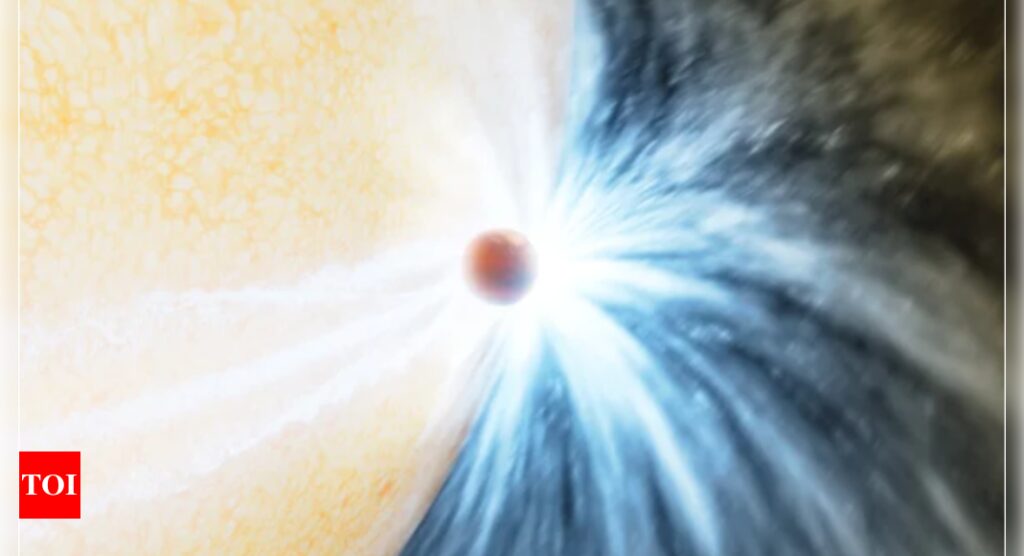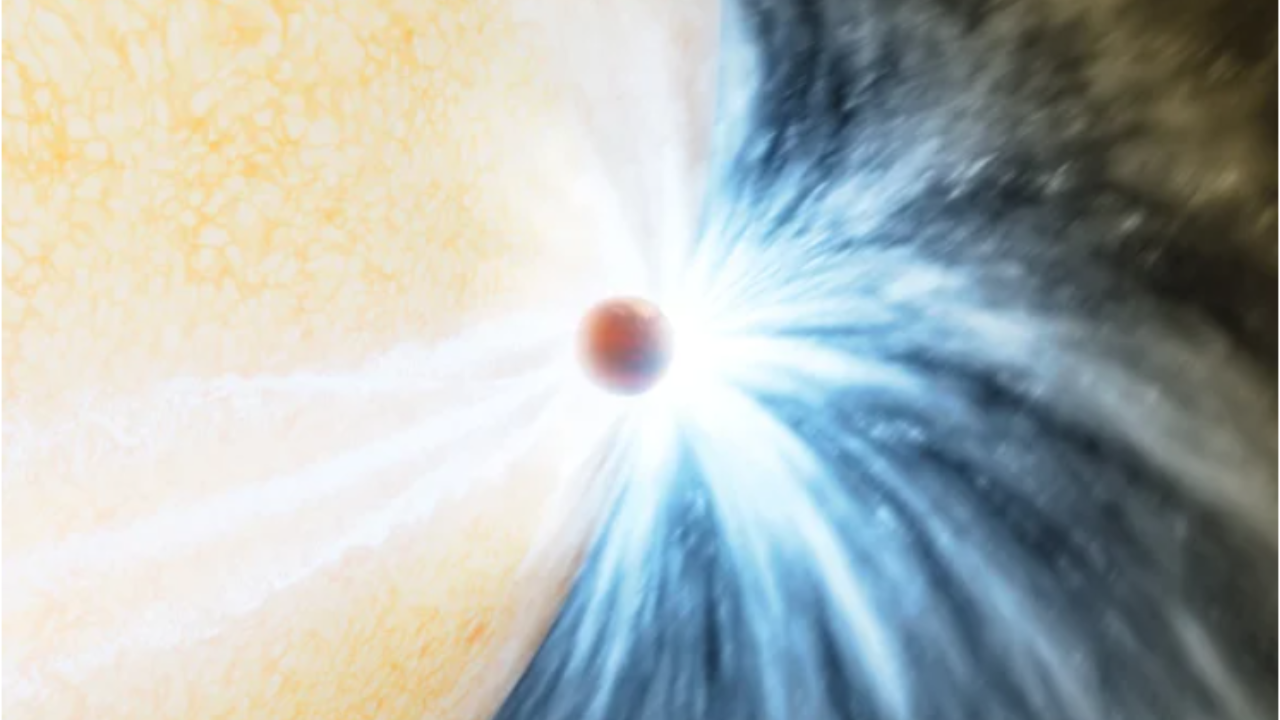Astronomers spot Sun-like star devouring planet – Times of India

For the first time, astronomers have caught a star in the act of swallowing an entire planet, hinting that Earth may meet the same fate though not in the near future. The Sun-like star, called ZTF SLRN-2020, lies about 15,000 light-years away in the Milky Way galaxy in the constellation Aquila and is said to have engulfed a hot gas giant bigger than Jupiter.
The study is an international collaboration among 26 astronomers from several key institutes, mainly MIT, Harvard University and Caltech. Among the 26 astronomers, six are Indian-origin researchers — Kishalay De, S R Kulkarni, Mansi M Kasliwal, Deepto Chakrabarty, Nimesh Patel and Viraj Karmbelkar.
The team detected ZTF SLRN-2020 using multiple ground-based observatories and Nasa’s Near Earth object Wide Field Infrared Survey Explorer spacecraft and described the details of this star in a study published in Nature journal. The star is estimated to have been between 0.8 and 1.5 times the mass of our Sun, while the engulfed exoplanet — name given to planets outside our solar system — was one to 10 times the mass of Jupiter.
Kishalay De, the lead author of the study, who was born in Calcutta, did his schooling from St James’ School and is now an astronomer at the Massachusetts Institute of Technology (MIT), has reportedly said, “We were seeing the end-stage of the swallowing. This type of event has been predicted for decades, but until now, we have never actually observed how this process plays out.”
The transfer of energy caused the star to temporarily increase in size and become a few hundred times brighter. Recent observations show the star has returned to the size and brightness it was before merging with the planet.
A similar fate will befall the Earth, though not for another 5 billion years, when the Sun is expected to burn out, and burn up the solar system’s inner planets.
“Planets with short orbital periods (roughly 10 days) are common around stars like the Sun. Stars expand as they evolve and thus we expect their close planetary companions to be engulfed, possibly powering luminous mass ejections from the host star. However, this phase has never been directly observed. Here we report observations of ZTF SLRN-2020, a short-lived optical outburst in the Galactic disk accompanied by bright and long-lived infrared emission. The resulting light curve and spectra share striking similarities with those of red novae — a class of eruptions now confirmed to arise from mergers of binary stars,” astronomers said in the journal.
The study is an international collaboration among 26 astronomers from several key institutes, mainly MIT, Harvard University and Caltech. Among the 26 astronomers, six are Indian-origin researchers — Kishalay De, S R Kulkarni, Mansi M Kasliwal, Deepto Chakrabarty, Nimesh Patel and Viraj Karmbelkar.
The team detected ZTF SLRN-2020 using multiple ground-based observatories and Nasa’s Near Earth object Wide Field Infrared Survey Explorer spacecraft and described the details of this star in a study published in Nature journal. The star is estimated to have been between 0.8 and 1.5 times the mass of our Sun, while the engulfed exoplanet — name given to planets outside our solar system — was one to 10 times the mass of Jupiter.
Kishalay De, the lead author of the study, who was born in Calcutta, did his schooling from St James’ School and is now an astronomer at the Massachusetts Institute of Technology (MIT), has reportedly said, “We were seeing the end-stage of the swallowing. This type of event has been predicted for decades, but until now, we have never actually observed how this process plays out.”
The transfer of energy caused the star to temporarily increase in size and become a few hundred times brighter. Recent observations show the star has returned to the size and brightness it was before merging with the planet.
A similar fate will befall the Earth, though not for another 5 billion years, when the Sun is expected to burn out, and burn up the solar system’s inner planets.
“Planets with short orbital periods (roughly 10 days) are common around stars like the Sun. Stars expand as they evolve and thus we expect their close planetary companions to be engulfed, possibly powering luminous mass ejections from the host star. However, this phase has never been directly observed. Here we report observations of ZTF SLRN-2020, a short-lived optical outburst in the Galactic disk accompanied by bright and long-lived infrared emission. The resulting light curve and spectra share striking similarities with those of red novae — a class of eruptions now confirmed to arise from mergers of binary stars,” astronomers said in the journal.









